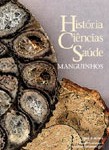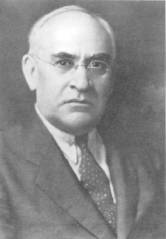A study on the classification of North American plants in the eighteenth century has expanded our knowledge of distinct classification methods and our understanding of how people related to nature at that time. The research of Professor Michel Kobelinski, of the State University of Paraná (Estadual do Paraná), has shown that down through history, the scientific, medicinal, and nutritional aspects of plantlife, in addition to practical questions about the plant world – and even somewhat fanciful ones – have been of integral concern within this body of knowledge, which has incorporated experience and observation.
In order to investigate what led the Jesuit Pierre-François-Xavier de Charlevoix to reject Linnaeus’ taxonomic model and, further, to explore the cleric’s intentions in disseminating a catalogue of the botanical curiosities of New France, Kobelinski analyzed Charlevoix’sHistoire et description générale de la Nouvelle France (History and general description of New France), especially the chapter “Description des plantes principales de l’Amérique Septentrionnale” (Description of the main plants of North America) (1744), along with the French author’s correspondence to the duchess of Lesguesdières from 1720 to 1723. The researcher found that Charlevoix’s classification model dated to the Middle Ages and established relationships between plant forms and the functions of living beings. This was in opposition to the Linnaean method, which used sexual criteria to study plants and was thus viewed as an affront to religious morality.
As a cleric, historian, and naturalist, Charlevoix sought to carve out a niche for himself among the powerful in the society of France’s Ancién Régime. In addition to classic texts, he made recourse to iconographic and discursive representations by sixteenth- and seventeenth-century naturalists, trying to show the relations between these and colonization and religious missions; he also published picturesque facts about Canadian history and nature in the era’s newspapers. In order to reach different audiences, like the nobility and lettered members of the bourgeoisie, and to call attention to the problems in France’s overseas territories – such as the loss of identity, lack of financing, absence of aid for settlers, and even the decline of the Society of Jesus – Charlevoix “endeavored to reconcile two types of languages, one popular and another more articulate. He was very adept at reconciling Christian ideology with critical method and a theological view of history. His world view went beyond botany.” In eighteenth-century France, his ideas influenced not only teaching systems and systems of thought but enlightened thinkers as well, like Voltaire, Chateaubriand, and Rousseau.
This study by the historian, entitled “The inventory of botanical curiosities in Pierre-François-Xavier de Charlevoix’s Nouvelle France (1744),” has been published in the journalHistória, Ciências, Saúde – Manguinhos, v. 20, no. 1, Jan.-Mar. 2013, and is available online at www.scielo.br/hcsm.









